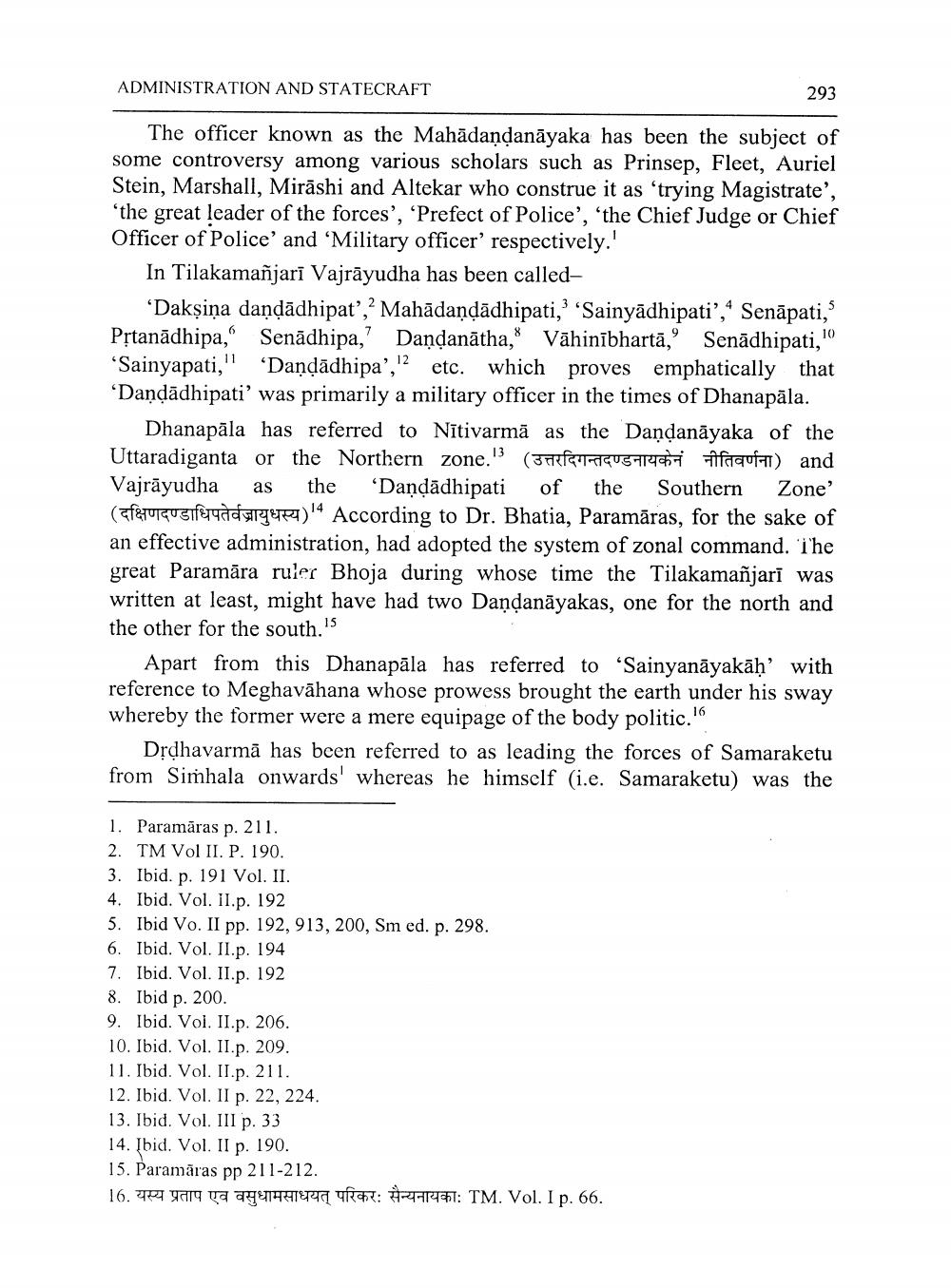________________
ADMINISTRATION AND STATECRAFT
The officer known as the Mahādaṇḍanāyaka has been the subject of some controversy among various scholars such as Prinsep, Fleet, Auriel Stein, Marshall, Mirashi and Altekar who construe it as 'trying Magistrate', 'the great leader of the forces', 'Prefect of Police', 'the Chief Judge or Chief Officer of Police' and 'Military officer' respectively.'
In Tilakamañjarī Vajrayudha has been called
'Dakṣina danḍādhipat',2 Mahādaṇḍādhipati,' 'Sainyādhipati'," Senapati," Pṛtanadhipa," Senādhipa,' Daṇḍanatha, Vähinībhartā," Senādhipati,' 'Sainyapati," 'Daṇḍādhipa',12 etc. which proves emphatically that 'Danḍādhipati' was primarily a military officer in the times of Dhanapāla.
13
Dhanapala has referred to Nītivarmā as the Daṇḍanayaka of the Uttaradiganta or the Northern zone." (उत्तरदिगन्तदण्डनायकेनं नीतिवर्णना) and Vajrayudha as the 'Daṇḍādhipati of the Southern Zone' (d)4 According to Dr. Bhatia, Paramāras, for the sake of an effective administration, had adopted the system of zonal command. The great Paramāra ruler Bhoja during whose time the Tilakamañjarī was written at least, might have had two Daṇḍanāyakas, one for the north and the other for the south."
Apart from this Dhanapala has referred to 'Sainyanayakāḥ' with reference to Meghavahana whose prowess brought the earth under his sway whereby the former were a mere equipage of the body politic.""
1. Paramāras p. 211.
2. TM Vol II. P. 190.
293
Dṛdhavarmā has been referred to as leading the forces of Samaraketu from Simhala onwards' whereas he himself (i.e. Samaraketu) was the
3. Ibid. p. 191 Vol. II.
4. Ibid. Vol. II.p. 192
5. Ibid Vo. II pp. 192, 913, 200, Sm ed. p. 298.
6. Ibid. Vol. II.p. 194
7. Ibid. Vol. II.p. 192
10
8. Ibid p. 200.
9. Ibid. Vol. II.p. 206.
10. Ibid. Vol. II.p. 209.
11. Ibid. Vol. II.p. 211.
12. Ibid. Vol. II p. 22, 224.
13. Ibid. Vol. III p. 33
14. Ibid. Vol. II p. 190.
15. Paramāras pp 211-212.
16. यस्य प्रताप एव वसुधामसाधयत् परिकरः सैन्यनायका: TM Vol. I p. 66.




